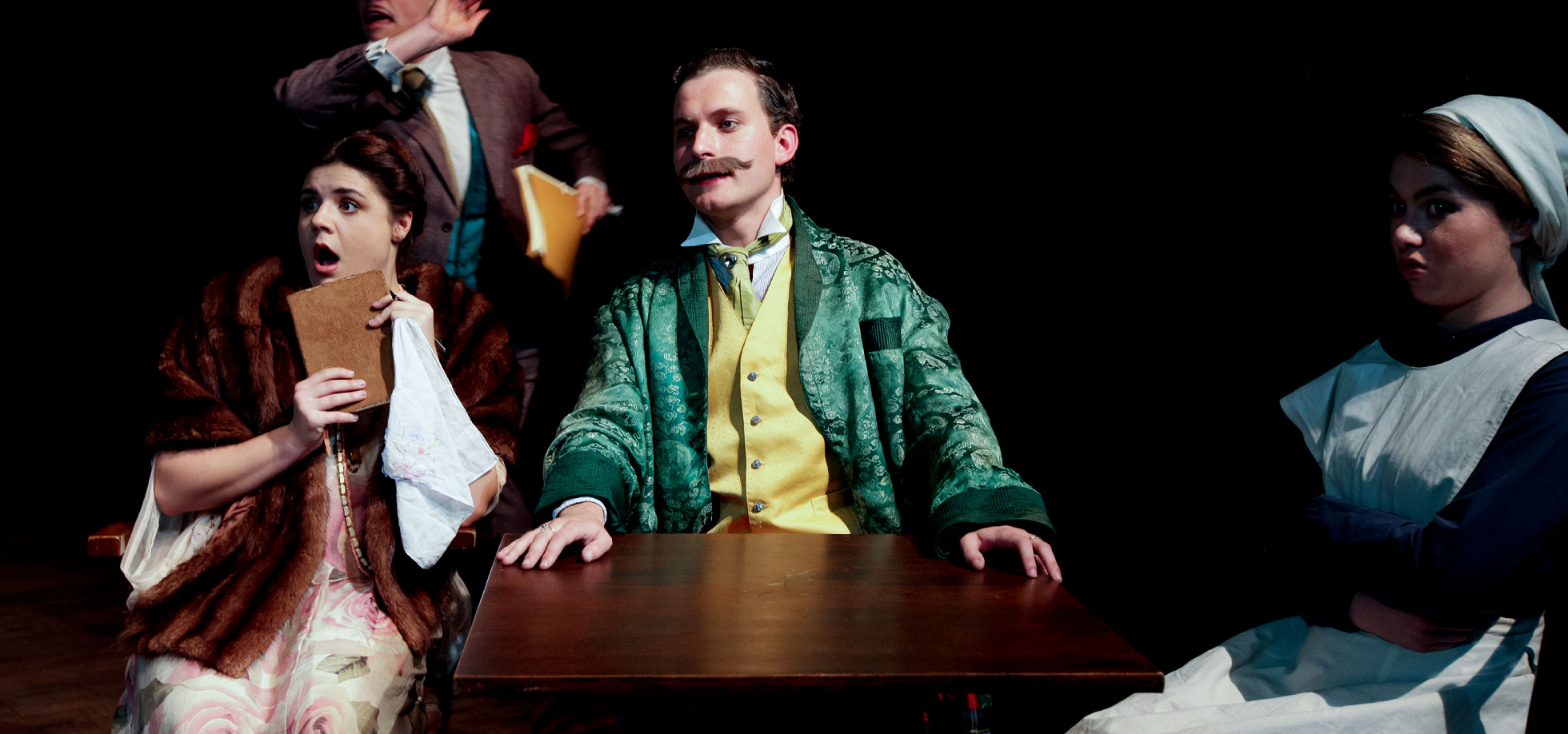
Term One - Rope Work/Abseiling
This unit will introduce students to another movement discipline to add to their repertoire - exploring how to effectively use ropes to move over terrain. The module will focus on how to climb a number of surfaces and descend from various heights using ropes and safety equipment and how these techniques may be used to achieve other team activity objectives. The aim is to give you enough experience of this specialised form of movement so that you will be comfortable incorporating the necessary equipment into a devised performance. This discipline encourages a number of factors that are crucial to a performer's overall development, including: balance, physical awareness, and recognition of health and safety matters. Further, it introduces a new dynamic form of movement that you may wish to explore in Year Three.
Terms One and Two - Advanced Gymnastics/Acrobatics/Tumbling
As there is a continued emphasis on movement and physical skills, you will need to maintain a suitable level of personal fitness and bodily strength and flexibility. A gymnastic ability will underpin much of the work undertaken in other units of the course. During Year 2, this module will also teach you disciplines specific to theatrical performance. You will continue to develop both individual and team-related skills. The experience of applying a variety of skills to differing performance situations will create a strong cornerstone for the work that will be required in the Honours year. In your final term of G/A/T training will focus on independent learning and the collaborative nature of creating an ensemble performance. Your final term performance will be self-created under the guidance of the unit tutor.
Term Three - Horse Riding
This unit will introduce students to horse riding; you will receive instruction from a BHS qualified riding instructor. You will learn how to walk, trot and canter and about riding safety, tack, basic stable management and care of the animal. The general aim of the unit is to ensure that students are comfortable mounting, sitting on, and riding a horse. An example of the practical application of this skill could involve riding from one set mark to another, holding the animal at a fixed position whilst delivering a short message to another rider, thus emulating the kind of requirement a film shoot may demand. You will not be trained to perform stunts on horses, but will work towards a level where you are comfortable on horseback - and are aware of the safety implications that arise when working on and around these animals. The guiding aim is to prepare you for various performance situations that you may encounter in a professional environment.
This unit will introduce students to another movement discipline to add to their repertoire - exploring how to effectively use ropes to move over terrain. The module will focus on how to climb a number of surfaces and descend from various heights using ropes and safety equipment and how these techniques may be used to achieve other team activity objectives. The aim is to give you enough experience of this specialised form of movement so that you will be comfortable incorporating the necessary equipment into a devised performance. This discipline encourages a number of factors that are crucial to a performer's overall development, including: balance, physical awareness, and recognition of health and safety matters. Further, it introduces a new dynamic form of movement that you may wish to explore in Year Three.
Terms One and Two - Advanced Gymnastics/Acrobatics/Tumbling
As there is a continued emphasis on movement and physical skills, you will need to maintain a suitable level of personal fitness and bodily strength and flexibility. A gymnastic ability will underpin much of the work undertaken in other units of the course. During Year 2, this module will also teach you disciplines specific to theatrical performance. You will continue to develop both individual and team-related skills. The experience of applying a variety of skills to differing performance situations will create a strong cornerstone for the work that will be required in the Honours year. In your final term of G/A/T training will focus on independent learning and the collaborative nature of creating an ensemble performance. Your final term performance will be self-created under the guidance of the unit tutor.
Term Three - Horse Riding
This unit will introduce students to horse riding; you will receive instruction from a BHS qualified riding instructor. You will learn how to walk, trot and canter and about riding safety, tack, basic stable management and care of the animal. The general aim of the unit is to ensure that students are comfortable mounting, sitting on, and riding a horse. An example of the practical application of this skill could involve riding from one set mark to another, holding the animal at a fixed position whilst delivering a short message to another rider, thus emulating the kind of requirement a film shoot may demand. You will not be trained to perform stunts on horses, but will work towards a level where you are comfortable on horseback - and are aware of the safety implications that arise when working on and around these animals. The guiding aim is to prepare you for various performance situations that you may encounter in a professional environment.